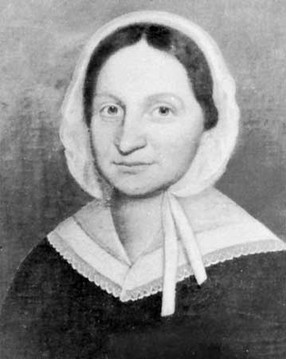Mary Lyon K-8 School
Introduction
Text-to-speech Audio
Images
Portrait of Mary Lyon

Backstory and Context
Text-to-speech Audio
Special Education has been a problematic subject of debate since the early 19th century, but was never fully addressed, attempted to be solved, or implemented into private and public schools until innovative educators such as Horace Mann sought to make education equally accessible to all kinds of people. A major influx of poor, non-English speaking, Catholic and Jewish immigrants immigrating into the United States were met with setbacks during the 19th and early 20th century. One leading educator of the country by the name of Horace Mann had a vision of a public-school system funded by the taxes paid by citizens that gave people of all economic and social backgrounds an equal and fair education that would help them achieve success that they otherwise would not receive.
In the early stages of special education programs, they began as delinquency prevention programs for abnormal and at-risk students. They also provided classes that taught manual training for industrial work along with their general education. Some special education programs even focused on the “moral training” of African-American children. Special schools and special classes did exist in the 19th century and gradually increased in the 20th century, but didn’t become common until the 1940’s. However, many of these programs were parts of private schools, which made their availability to the public very rare and saw many students with special disabilities fall through the cracks.
Several supreme court cases were monumental in establishing laws that protected special needs students from the tyranny of a capitalist society and providing them with a fair education such as Brown v. Board of Education, Pennsylvania Assn. for Retarded Children v. Commonwealth of Pennsylvania, and Mills v. Board of Education of District of Columbia. They all led Congress to do an investigation in 1972 of the state of mentally retarded children in the United States and saw that millions of children were not receiving he education that they needed because they had been neglected. Therefore, in 1975 Congress enacted the Public Law 94-142: The Education for All Handicapped Children Act of 1975. This Act ensured that all students with special needs would receive a fair education and due process of law. This act was later amended and became the Individuals with Disabilities Education Improvement Act of 2004 that ensured schools’ accountability and early intervention, an emphasis on reading, and research-based instruction with highly qualified teachers.
Therefore, schools such as the Mary Lyon school have sprung across the nation with their vision being to assist those students in need that have otherwise been neglected in general education public schools with their main motto being ROAR. ROAR stands for: Respect, Optimism, Achievement, and Responsibility; with all of them combining to make sure that everyone regardless of mental capabilities respect one another and help one another while keeping an open mind.
Sources
https://www.bostonpublicschools.org/domain/1735.
Inc., Blackboard. Boston Pubic Schools. . Accessed October 03, 2018.
https://www.bostonpublicschools.org/school/lyon-school.
Wright, Pete. The History of Special Education Law. Wrightslaw. November 29, 2010. Accessed October 03, 2018.
http://www.wrightslaw.com/law/art/history.spec.ed.law.htm.
